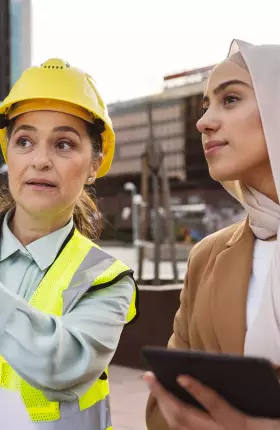It is a deceptively simple idea: collaboration is key to achieving the UN’S sustainable development goals. The issues involved—including poverty, education, and health care—are complex, after all, and require action by multiple stakeholders. And yet despite significant cooperation in some areas, progress is frustratingly slow. That’s because while we know collaboration is vital, we don’t always collaborate in the most effective ways.
Collaboration focused at the community or regional levels can make it difficult to achieve sufficient scale in a reasonable amount of time. On the flip side, efforts that are too ambitious—say, taking aim at solving problems across all of sub-Saharan Africa—may not gain traction on the ground, the result of too broad a focus and the difficulty of addressing regional nuances. To maximize impact, country-level collaboration is the sweet spot.
To maximize impact, country-level collaboration is the sweet spot.
In-country collaborations—wherein public-, private-, and social-sector players work together to tackle critical problems—offer three powerful benefits. First, they encourage the pooling of resources—especially financial resources—from a variety of groups, which in turn enables bigger ambitions and amplified impact. Second, they allow knowledge sharing, ensuring that various participants can bring their expertise to bear on challenges and help strengthen outcomes. And third, collaboration ensures that different organizations and initiatives aren’t duplicating efforts.
Food Systems in Kenya
In sub-Saharan Africa, where agriculture employs about 60% of the population and accounts for roughly 20% of GDP, there is a pressing need for innovative ways to address the continent’s food system challenges. Collaborative approaches can drive significant progress against multiple SDGs simultaneously, including the first three SDGs related to poverty, hunger, and health and well-being.
Historically, agriculture projects in Africa have focused on one part of the value chain—farm-level production, for example. More recently, numerous projects have focused on connecting farmers to markets for their products. But in both instances the efforts have rarely succeeded in affecting the broader food system in a holistic manner. While it is more complex to try a systems approach, that’s exactly what is required to drive real change.
Recently, BCG, in conjunction with the UN Climate Change High-Level Champions, developed a collaborative initiative aimed at incentivizing the adoption of
high-yield resilient and adaptive practices
, starting in Kenya. The initiative has four components:
- NGOs will help train farmers in these sustainable agricultural practices. Such techniques—installing solar-powered irrigation, for example, and shifting to more adaptive and resilient crops such as millet and sorghum—can help farmers adapt to ongoing shocks related to climate change.
- Private-sector processors will purchase the crops and ingredients grown by farmers using these sustainable practices.
- Government-funded school meal programs will provide a “demand sink” for adaptive, resilient, and nutritious food that’s processed by the private-sector companies. This reduces the risk for these companies as they invest to help farmers in their transition to new practices.
- Banks and social-sector foundations will collaborate to provide grants and blended finance facilities that offer low-cost credit to participating sustainable seed, fertilizer, and crop protection companies, as well as farmers and processors. Such offerings will incentivize and enable all participating stakeholders to adopt and scale up sustainable practices, products, and supply chains.
The initiative aims to create a more consistent supply of nutritious food for millions of school children, promote the shift toward food production that sequesters more carbon than current mainstream practices, and increase both employment and incomes. If deployed successfully in Kenya, it will create the basis for a framework that can be deployed in other countries on the continent.
Leveraging In-Country Collaboration
It is not difficult to see how in-country collaboration can be a catalyst for progress across all the SDGs. A critical step in achieving goals related to climate and nature, for example, is the rapid adoption of renewable energy. Governments have introduced incentives that encourage the private sector to invest in both proven and emerging renewable energy technologies. These country-specific collaborations have yielded low-cost, high-quality renewable energy solutions for consumers, contributing to a large-scale shift across society that wouldn’t otherwise be possible.
When it comes to driving progress on health care, NGOs and foundations can partner with both governments and health care companies to improve the delivery of in-country health care services to communities in need. This also applies to pandemic preparedness and response. During the COVID-19 pandemic, for example, public-private partnerships helped to dramatically scale and speed up vaccine testing, production, and distribution.
The opportunities for such cross-sector cooperation to drive SDGs, and social and economic progress more generally, are many. But to seize them, we must radically rethink how we collaborate and then develop and implement the best country-level collaboration models.






